#Jacques R. Marquette
Explore tagged Tumblr posts
Text
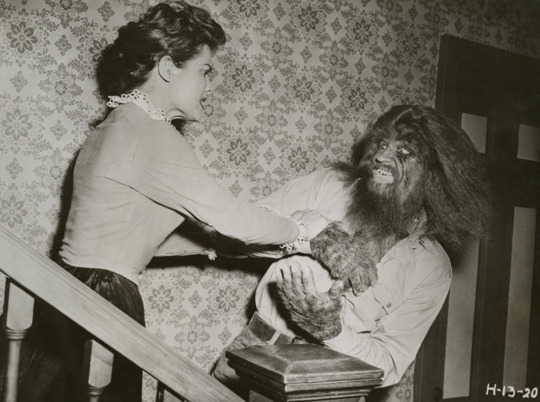
Anne Gwynne and Gil Perkins in Teenage Monster (1957)
83 notes
·
View notes
Text
A Bucket of Blood
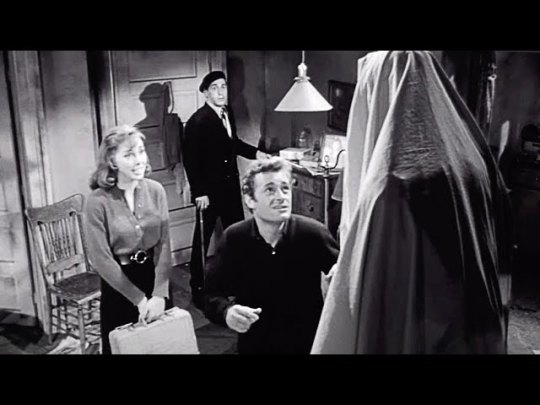
“Ring rubber bells! Beat cotton gongs! Strike silken cymbals!” Shooting in five days with next to no budget, Roger Corman made a better comedy horror film than many big-budget production companies have made in months. For a rush job, his A BUCKET OF BLOOD (1959, Shudder, Prime, Tubi) has an amazingly consistent tone and point of view. He and screenwriter Charles B. Griffith borrowed plot elements from MYSTERY OF THE WAX MUSEUM (1933) and threw in their observations of the California Beat scene to create a film that mocks artistic pretension while also taking on the generations of wannabes who think they can win the prize without any discernible effort. If you made it today, you’d have to create a cameo for one of the Kardashians.
Walter Paisley (Dick Miller) is a busboy at The Yellow Door, a Beat hangout. He dreams of becoming an artist like his beloved Carla (Barboura Morris). When he accidentally kills his landlady’s cat, he covers the body in clay and passes it off as a sculpture. And he doesn’t impress just the pseudo-artists whose coffee cups he collects. He also has big-time art dealers and critics falling all over themselves. To maintain his pose, he has to start killing people, creating a series of murderous abstracts.
Corman has called Miller “the best actor in Hollywood.” His Paisley seems a little overstated at first. If he slouched any more in his first scene, he’d be dragging his chin on the floor. But he finds a style for the performance that fits Griffith’s screenplay. He’s seriously goofy. When he tries to create a sculpture based on Morris’ photo, he throws clay at the thing while shouting, “Make a nose!” Corman, who knew how to pace a horror film shot on a slender budget, also turns out to have great comic timing. After one murder (of future game-show host Bert Convy), Walter stashes the body on the kitchen ceiling, and as his landlady barges in, an arm drops down at just the right time. After she leaves, the dripping blood accelerates at the perfect pace to make Walter’s soliloquy screamingly funny. Corman and Miller also pull off the incredible feat of keeping things buoyant even when Walter starts killing people intentionally. The shots of him grimacing seriously as he wrings a neck or saws off a head are beyond silly. Corman also gets good work from his supporting cast — the beatific Morris, Anthony Carbone as Miller’s corrupt boss, Julian Burton, who seems to be channeling Laird Cregar as a Beat poet, and Ed Nelson, who has great line readings as an undercover cop. Cinematographer Jacques R. Marquette captures some great nightmarish shots of Venice, CA, at night. Jazz great Fred Katz did the score.
#horror comedy#roger corman#charles b. griffith#dick miller#barboura morris#bert convy#anthony carbone#ed nelson#jacques r. marquette#fred katz
0 notes
Text
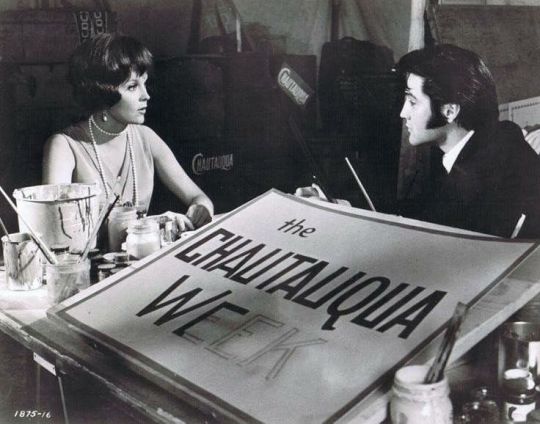

"The Trouble With Girls (And How To Get Into It)" (1969) Directed by Peter Tewksbury; Screenplay by Arnold Peyser and Lois Peyser; Produced by Lester WelchStarring; Cinematography by Jacques R. Marquette; Music by Billy Strange. Produced and distributed by Metro-Goldwyn-Mayer — Based on Chautauqua by Day Keene and Dwight V. Babcock. CAST Starring Elvis Presley... as Walter Hale. Co-starring Marlyn Mason... as Charlene; Sheree North... as Nita Bix, or Miss Bix; Edward Andrews... as Johnny; John Carradine as Mr. Drewcolt; Anissa Jones... as Carol Bix; and Nicole Jaffe... as Betty Smith. Guest star Vincent Price... as Mr. Morality. Production ran from late October to mid-December 1968.





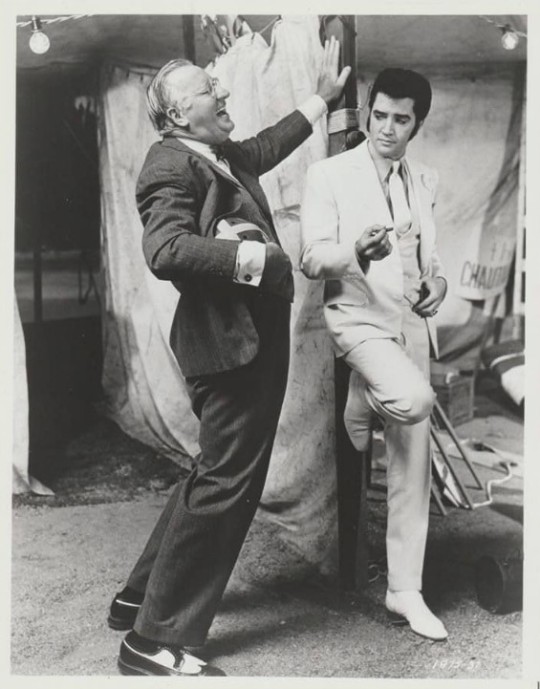


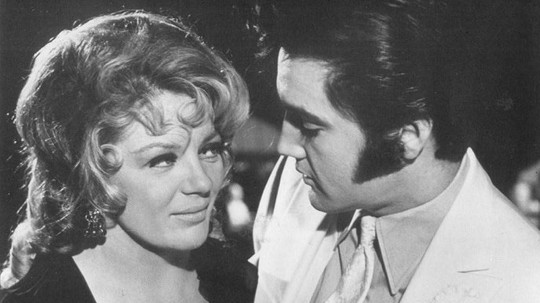
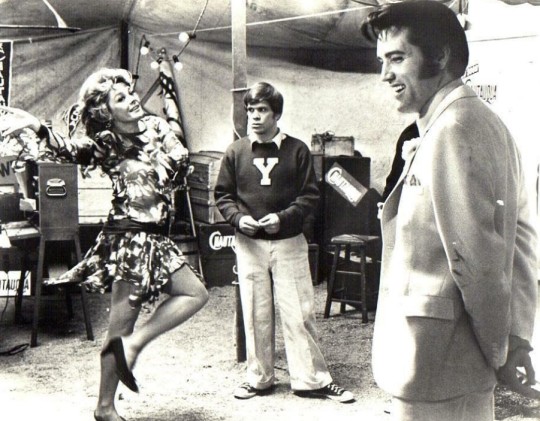
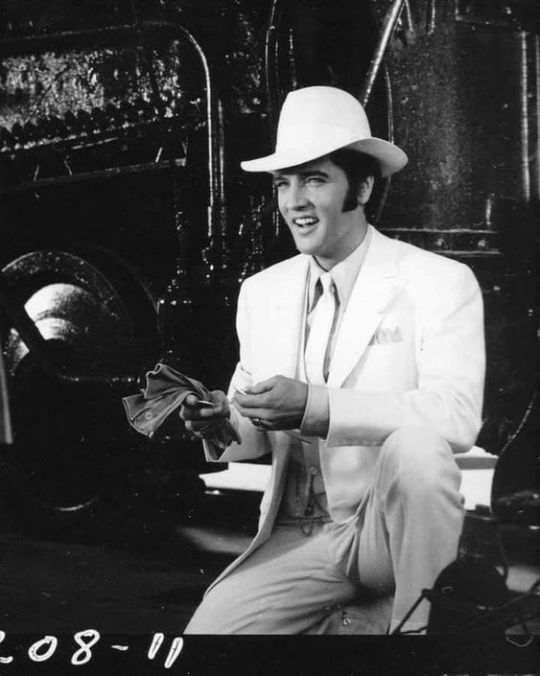
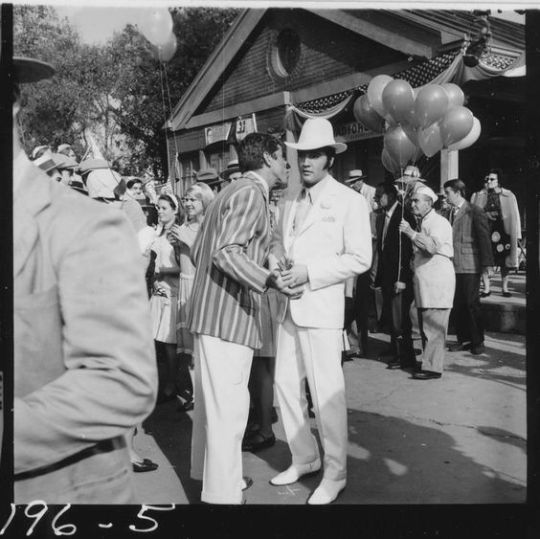




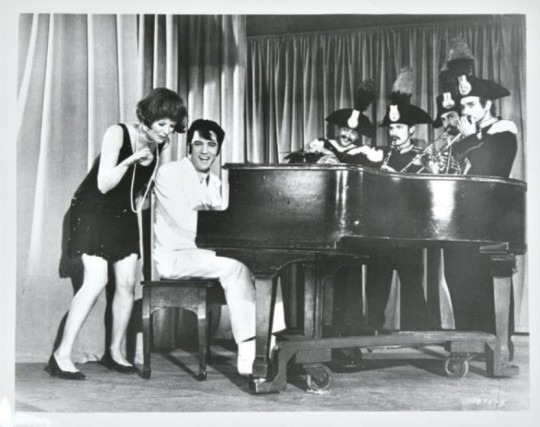

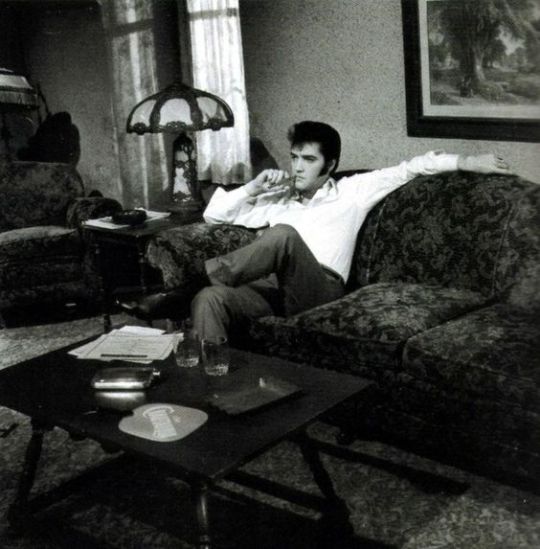
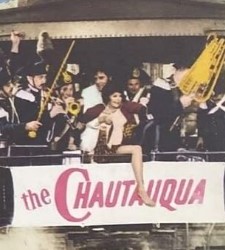
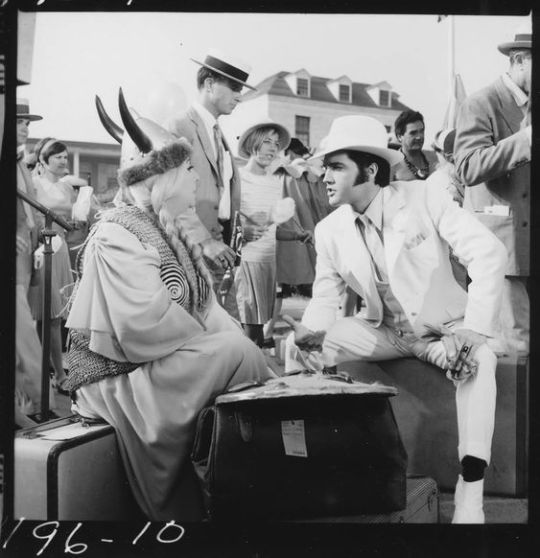
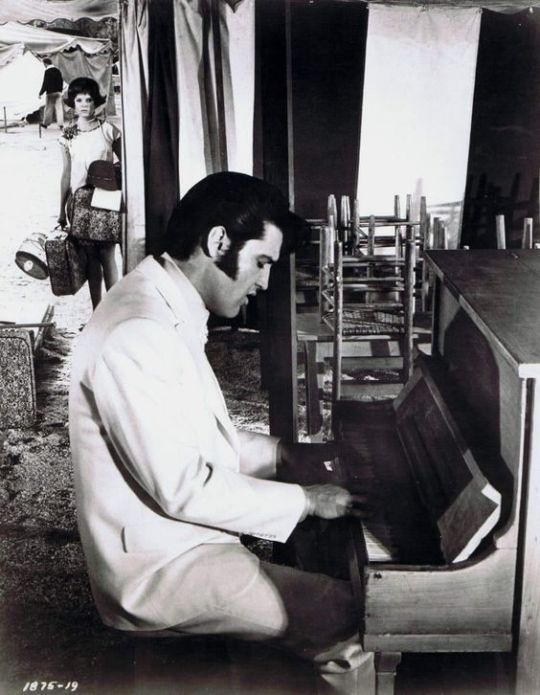
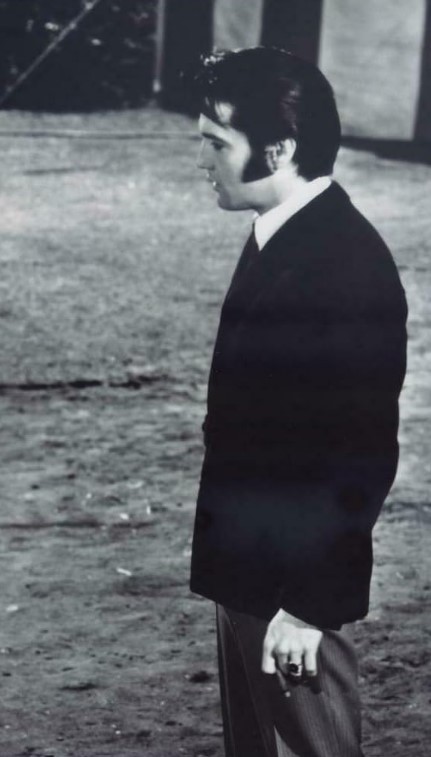


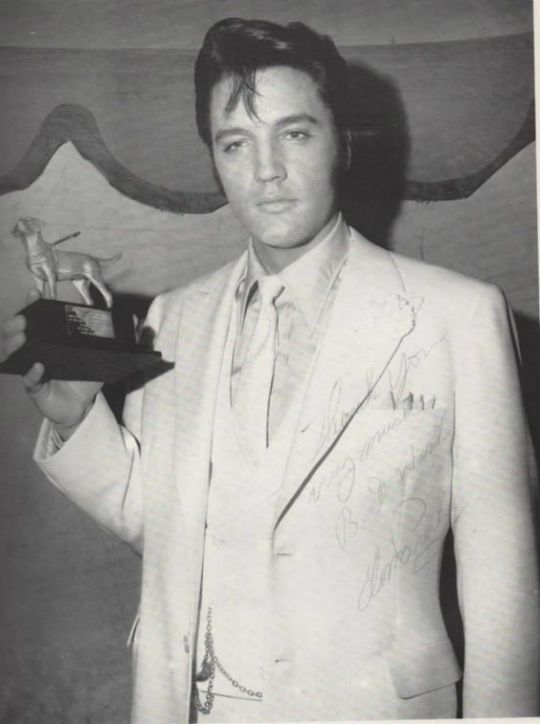
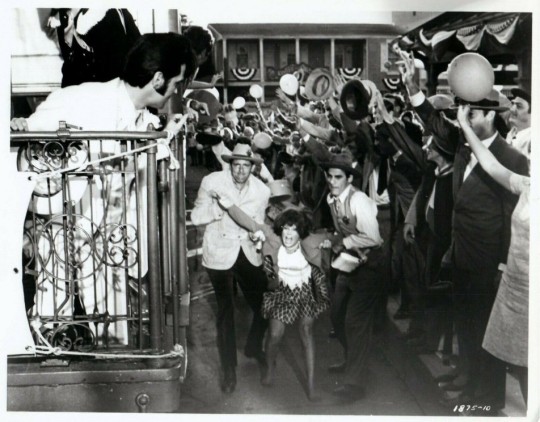
#no special reason but this is one of my favorite elvis movies#i love the environment the story takes place#it feels like this movie's a 'normal day business' life kind of story#it's unpretentious... and that's what i personally love the most about it#and walter hale - other than the good looks - has a great nonchalant but teasing personality - one of my favorite characters elvis ever did#by the end how he goes from 'so long honey see you around' to 'get that woman out of town' for his own benefit it's so funny#elvis presley#elvis history#elvis movies#the trouble with girls#1969#MGM#elvis#60s elvis#elvis the king
8 notes
·
View notes
Text


CALIFICACIÓN PERSONAL: 5 / 10
Título Original: Last Woman on Earth
Año: 1960
Duración: 71 min
País: Estados Unidos
Dirección: Roger Corman
Guion: Robert Towne
Música: Ronald Stein
Fotografía: Jacques R. Marquette
Reparto: Betsy Jones-Moreland, Robert Towne, Antony Carbone
Productora: Roger Corman Productions, The Filmgroup
Género: Drama; Horror; Mystery; Sci-Fi
TRAILER:
youtube
0 notes
Photo


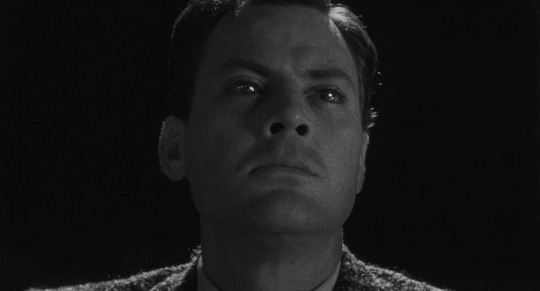
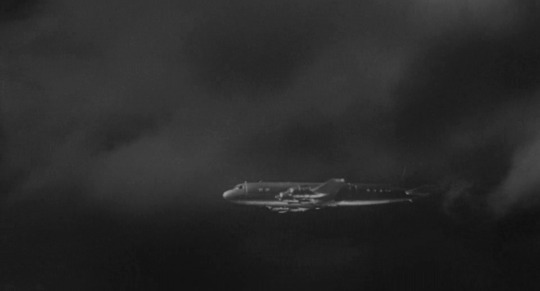

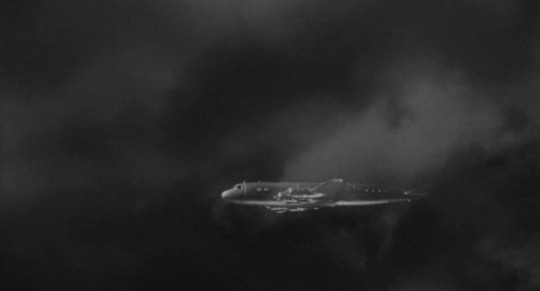
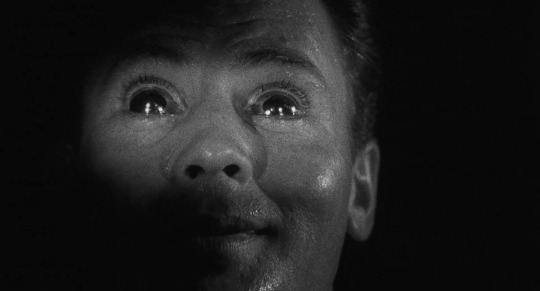

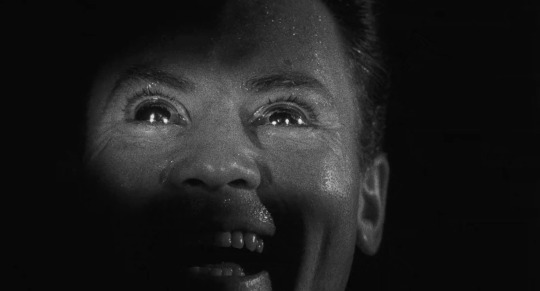

The Brain from Planet Arous (Nathan Juran, 1957).
20 notes
·
View notes
Photo
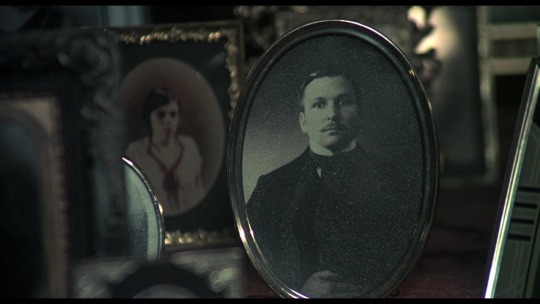
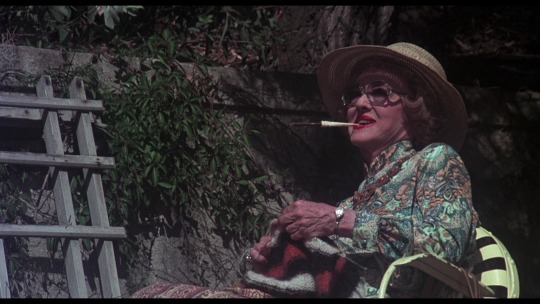
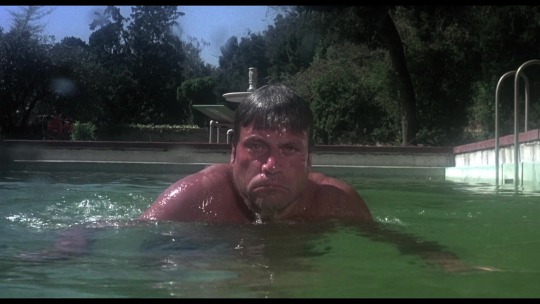




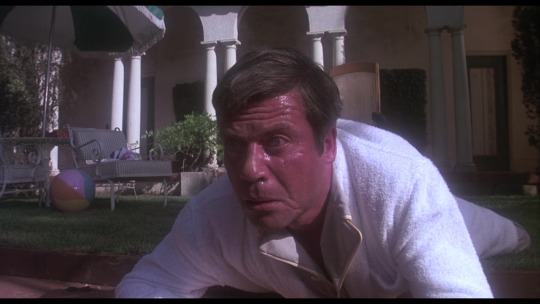
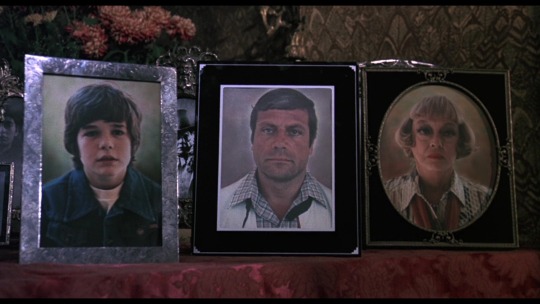
burnt offerings (us/it, curtis 76)
#burnt offerings#dan curtis#oliver reed#bette davis#karen black#anthony james#lee montgomery#Jacques R. Marquette
94 notes
·
View notes
Photo

Burnt Offerings (1976)
The haunted house subgenre of horror films has a storied history. For horror fans in the mid-1970s, the haunted house movie had become passé, with grotesque offerings such as The Exorcist (1972) and The Legend of Hell House (1973) pushing the envelope for horror at large. In various ways, Dan Curtis’ Burnt Offerings, based on Robert Marasco’s novel of the same name, feels like a throwback for a ‘70s movie. This is slow-burn horror, and that did not appeal to most moviegoers then or in our hyperactive present day. Burnt Offerings’ commercial failure upon release means it remains overshadowed by some other haunted house movies of its decade, including The Amityville Horror (1979). Yet for those who allow the film’s atmosphere to wash over their nerves, Burnt Offerings is a somewhat flawed, but worthy addition to the subgenre.
The Rolf family – father Ben (Oliver Reed), mother Marian (Karen Black), 12-year-old son Davey (Lee H. Montgomery) – are visiting a nineteenth century neoclassical mansion. Ben and Marian, who saw a picture of the home advertised as a summer rental in a newspaper, are surprised to find it in decrepit shape. However, the aging owners, siblings Arnold (Burgess Meredith) and Rosalyn Allardyce (Eileen Heckart) are willing to rent the house for $900 (just over $4,000 in 2021’s USD) from July 1 to Labor Day (first Monday in September). There is one other condition: that their 85-year-old mother be allowed to stay in the upstairs room and that the Rolfs do not interact with her other than leaving a tray of food outside her door. The Rolfs consent to the agreement and arrive July 1 with Ben’s Aunt Elizabeth (Bette Davis in a surprisingly non-cantankerous late career role). A series of curious incidents without any foreshadowing color the Rolf family’s stay in the early day and weeks of the summer, as the temporary residents realize that something – or someone – sinister is taking hold of their time there.
Based on the novel of the same name by Robert Marasco, the film’s title alludes to sacrifices, perhaps of a religious nature. A burnt offering in the Abrahamic religions, Hinduism, and various other religions is a primeval practice, connecting these faiths to times when superstition and fear of the unknown ran rampant. However, Burnt Offerings, as a title, is meant to be metaphorical, not literal. As such, there are no burning incidents to any degree or ritual sacrifices over the course of the film. Whatever or whoever is haunting this house demands sacrifices from the Rolf family, and these demands become harder to ignore as the summer wears on. For one family member, tending to the malevolent force’s appetite for sacrifices takes on ceremonial, reflexive dimensions. It is as if they are a lonely attendant, receiving direction from an intangible source, and dotes on the house because they know little else in life. This family member capitulates to the house’s genius loci incrementally – by film’s end, igniting this summer home’s true horror.
Burnt Offerings, even for the 1970s, reveals its secrets at a leisurely pace. Interested viewers must modulate their expectations, as contemporary jumpscares are all but nonexistent. Director Dan Curtis, working on an adapted screenplay that he co-wrote with William F. Nolan (primarily an author; 1976’s Logan Run) sets the tempo of the film to a slow, steamy summer. Narrative revelations unfold slowly, as do the film’s most horrific moments. One striking sequence early on in the film takes place at the mansion’s pool. The scene begins innocuously, only to descend into a disturbing moment that takes place without any musical, narrative, or visual foreshadowing. It is not the last time such a set-up occurs, as Burnt Offerings’ most effective horror scenes occur without much warning, gradually escalating – even if the scene’s ultimate result might become apparent midway through – into an explosion of visceral horror filmmaking. There is nothing groundbreaking here, especially with a screenplay disinterested in examining the family relationships, but it does manage to pull the viewer in to see what happens next.
Solid performances help sell the psychological terror that the Rolf family goes through. As the patriarch, Oliver Reed looks and sounds nothing like a suburban father. Ignoring the fact he retains his English accent, his body shape and the patrician air about him (director Carol Reed of 1949’s The Third Man and 1968’s Oliver! acclaim was Oliver’s uncle) makes an uneasy fit. The role requires more mental uncertainty and, going by his considerably masculine appearances and demeanor alone, he does not look the part. Oliver Reed, as Ben Rolf, performs best in moments requiring significant bodily movement. The aforementioned pool scene and most terrifying moments of the movie justify his casting. As Marian Rolf, Karen Black undergoes the most startling transformation over the course of Burnt Offerings. At the height of her career following appearances in Airport 1975 (1974) and Nashville (1975), her role here steadily sheds its sympathetic beginnings until she is barely recognizable from the movie’s opening. A lesser performance from Black or any other actress might tip audiences off to her character’s changes earlier. That Black instead reins in any expected histrionics is to the movie’s great benefit – and helps it earn its finale’s lunacy.
Lee H. Montgomery, as the young Davey Rolf, was best known at this time for being the lead in Ben (1972), and delivers a sufficient performance here. Bette Davis, in the final stages of her storied sixty-year career, provides one of her best bits of work for the late-career filmography. So often cast in crotchety, antisocial, misanthropic at this time, it is refreshing to see her as a significantly less crotchety, caring aunt. But on- and off-set, Davis voiced her displeasure with the screenplay and her adult co-stars – labeling Oliver Reed a drunkard and Karen Black a prima donna. There are no indications of this contentious working relationship that might be obvious on-camera. Her final scene in the movie – shared with Oliver Reed – has Davis appear bloated (with the assistance of makeup), sweating profusely, in a simultaneously touching and sad moment that their characters share together. Davis’ utterances in that scene, along with her physical acting, elevate the moment beyond what might easily have been kitsch.
Coming into Burnt Offerings, cinematographer Jacques R. Marquette (1957’s The Brain from Planet Arous, 1958’s Attack of the 50 Foot Woman) and editor Dennis Virkler (1990’s The Hunt for Red October, 2004’s The Chronicles of Riddick) both had little on their résumés that could inspire any excitement. Yet, in their collaboration, Burnt Offerings represent what might be, for both craftsmen, their finest work. Utilizing DeLuxe color and overexposing all of the exterior scenes, Marquette draws sharp contrasts between the exceptionally bright natural lighting against the slightly dim indoor scenes. Marquette’s decisions make Burnt Offerings’ daytime horrors all the more shocking when they happen. Virkler’s judicious editing allows for unfussed dialogue, and permits the film’s brief, but intense, spurts of violence a visual staccato that nevertheless retains a comprehensible, albeit gruesome, transition from more relaxed moments. When in tandem with Bob Cobert’s (the soap opera Dark Shadows that ran from 1966-1971) film score, that work is undermined in the film’s second half. Cobert tends to rely on horror music stereotypes – grating, chaotic strings and foreboding woodwinds and brass – that increasingly telegraphs the film’s shocking moments as the film progresses. Credit Cobert, however, for a memorable music box motif (yet another horror movie music fixture) that will stay in one’s head as the end credits roll.
Filmed at the Dunsmuir House, in Oakland, California, Burnt Offerings is the beginning of that location’s cinematic history. Dunsmuir House, a neoclassical-revival mansion, would later appear in movies such as Phantasm (1979) and A View to a Kill (1985). For Burnt Offerings, the walls of Dunsmuir House were repapered and its swimming pool – damaged in the 1906 San Francisco earthquake – repaired. The house, already in some state of disrepair when shooting began, was restored to its original condition by the end of production – a development and an expense that makes more sense when you have completed viewing Burnt Offerings. With Dunsmuir House, production designer Eugène Lourié (1939’s The Rules of the Game, 1953’s The Beast from 20,000 Fathoms) has a gorgeous canvas to work with, and returns to his roots in 1930s French cinema (oftentimes in films starring middle- and upper-class characters) to evoke the house’s former and, eventually, restored elegance. Burnt Offerings, through its production design alone, would not look out of place in 1930s French moviemaking – an incongruent, but nevertheless fascinating decision for a movie set in the United States.
Mixed reviews upon its release and the film’s deliberate pacing ensured Burnt Offerings’ underwhelming commercial returns for United Artists (I, for one, do not mind deliberately-paced horror cinema as long as long as the decisions deliberately pace the movie are executed with artistic intelligence). For director Dan Curtis, this was his first foray into feature filmmaking that did not involve the Dark Shadows television series. As a director, producer, and writer on the original Dark Shadows soap opera as well as the director on House of Dark Shadows (1970) and Night of Dark Shadows (1971), Burnt Offerings seems to be suitable to Curtis’ specialties. Curtis lamented the original novel’s ending, but nevertheless found himself up to the challenging in adapting the film. The film’s disappointing reception would make Burnt Offerings Curtis’ only involvement in a theatrical feature.
Burnt Offerings, in the shadows of later movies such as The Amityville Horror and Stanley Kubrick’s The Shining (1980), has struggled to gain much visibility in the decades after its theatrical run. A 2003 DVD release for Canada and the United States contained poor video quality and an inexcusable audio track for the voices. Stylistically, Burnt Offerings stands apart for the way it approaches its frights. As it cuts it way through the Rolf family’s summer vacation, it tends to laze about in the sun, with admiring shots of the Dunsmuir House even in the most perilous moments. If the viewer can appreciate Burnt Offerings’ decision to delay its soon-to-be-pervasive sense of dread, the film’s closing stages become much more rewarding.
My rating: 6.5/10
^ Based on my personal imdb rating. My interpretation of that ratings system can be found in the “Ratings system” page on my blog (as of July 1, 2020, tumblr is not permitting certain posts with links to appear on tag pages, so I cannot provide the URL).
For more of my reviews tagged “My Movie Odyssey”, check out the tag of the same name on my blog.
#Burnt Offerings#Dan Curtis#Karen Black#Oliver Reed#Bette Davis#Burgess Meredith#Eileen Heckart#Lee H. Montgomery#Dub Taylor#William F. Nolan#Robert Marasco#Jacques R. Marquette#Dennis Virkler#Bob Cobert#Eugene Lourie#TCM#My Movie Odyssey
5 notes
·
View notes
Photo

ANOTHER PERFECT SHOT
A BUCKET OF BLOOD | 1959 Director | Roger Corman Cinematographer | Jacques R. Marquette
RIP 18: Remembering Dick Miller
0 notes
Photo

Detroit is known as the car capital of the world.
Alpena is the home of the world's largest cement plant.
Rogers City boasts the world's largest limestone quarry.
Elsie is the home of the world's largest registered Holstein dairy herd.
Michigan is first in the United States production of peat and magnesium compounds and second in gypsum and iron ore..
Colon is home to the world's largest manufacturer of magic supplies....
The state Capitol with its majestic dome was built in Lansing in l879.
Although Michigan is often called the Wolverine State , there are no longer wolverines in Michigan. (However, one was spotted in 2007, so there are some. )
Michigan ranks first in state boat registrations.
The Packard Motor Car Company in Detroit manufactured the first air-conditioned car in 1939.
The oldest county based on date of incorporation is Wayne in 1815...
Sault Ste. Marie was founded by Father Jacques Marquette in 1668. It is the third oldest remaining settlement i
n the United States In 1817, the University of Michigan was the first university established by any of the states. It was founded by priests. Originally named Cathelepistemian and located in Detroit . The name was changed in 1821. The university moved to Ann Arbor in 1841.
The city of Novi was named from its designation as Stagecoach Stop #6 or No.VI.
Michigan State University has the largest single campus student body of any Michigan university. It is the largest institution of higher learning in the state and one of the largest universities in the country. Michigan State University was founded in 1855 as the nation's first land-grant university and served as the prototype for 69 land-grant institutions later established under the Morrill Act of 1862. It was the first institution of higher learning in the nation to teach scientific agriculture..
The largest village in Michigan is Caro.
Michigan's state stone, the Petoskey, is the official state stone. It is found along the shores of Lake Michigan .
The Mackinac Bridge is one of the longest suspension bridges in the world connecting the upper and lower peninsulas of Michigan ..... It spans five miles over the Straits of Mackinac, which is where Lake Michigan and Lake Huron meet. The "Mighty Mac" took three years to complete and was opened to traffic in 1957.
Gerald R Ford grew up in Grand Rapids and became the 38th president of the United States. He attended the University of Michigan where he was a football star. He served on a World War II aircraft carrier and afterward represented Michigan in Congress for 24 years. He was also an Eagle Scout, the highest rank in Boy Scouts.
The Kellogg Company has made Battle Creek the Cereal Capital of the World. The Kellogg brothers accidentally discovered the process for producing flaked cereal products and sparked the beginning of the dry cereal industry.
The painted turtle is Michigan 's state reptile.
The western shore of Michigan has many sand dunes. The Sleeping Bear Dunes rise 460 feet above Lake Michigan . Living among the dunes is the dwarf lake iris the official state wildflower.
Vernor's ginger ale was created in Detroit and became the first soda pop made in the United States ..... In 1862, pharmacist James Vernor was trying to create a new beverage when he was called away to serve our country in the Civil War. When he returned, four years later, the drink he had stored in an oak case had acquired a delicious gingery flavor.
The Detroit Zoo was the first zoo in America to feature cageless, open-exhibits that allowed the animals more freedom to roam.
Michigan is the only place in the world with a floating post office.....The J. W. Westcott II is the only boat in the world that delivers mail to ships while they are still underway. They have been operating for 125 years.
Indian River is the home of the largest crucifix in the world. It is called the Cross in the Woods.
Michigan has the longest freshwater shoreline in the world Michigan has more shoreline than any other state except Alaska .
The Ambassador Bridge was named by Joseph Bower, the person credited with making the bridge a reality, who thought the name, Detroit-Windsor International Bridge , as too long and lacked emotional appeal. Bower wanted to symbolize the visible expression of friendship of two peoples with like ideas and ideals.
Michigan has more than 11,000 inland lakes and more than 36,000 miles of streams. Michigan has 116 lighthouses and navigational lights. Seul Choix Point Lighthouse in Gulliver has been guiding ships since 1895. The working light also functions as a museum, which houses early 1900's furnishings and maritime artifacts
Forty of the state's 83 counties adjoin at least one of the Great Lakes . Michigan is the only state that touches four of the five Great Lakes . Standing anywhere in the state a person is within 85 miles of one of the Great Lakes ..
Michigan includes 56,954 square miles of land area, 1,194 square miles of inland waters, and 38,575 square miles of Great Lakes water area.
Sault Ste. Marie was established in 1668 making it the oldest town between the Alleghenies and the Rockies.
Michigan was the first state to provide in its Constitution for the establishment of public libraries. Michigan was the first state to guarantee every child the right to tax-paid high school education.
Four flags have flown over Michigan - French, English, Spanish and United States
Isle Royal Park shelters one of the largest moose herds remaining in the United States .....
Some of the longest bulk freight carriers in the world operate on the Great Lakes. Ore carriers 1,000 feet long sail Michigan 's inland seas.
The Upper Michigan Copper Country is the largest commercial deposit of native copper in the world.
The 19 chandeliers in the Capitol in Lansing are one of a kind and designed especially for the building by Tiffany's of New York. Weighing between 800-900 pounds apiece, they are composed of copper, iron, and pewter.
The first auto traffic tunnel built between two nations was the mile-long Detroit-Windsor tunnel under the Detroit River .
The world's first international submarine railway tunnel was opened between Port Huron, Michigan, and Sarnia, Ontario, Canada in 1891.
The nation's first regularly scheduled air passage service began operation between Grand Rapids and Detroit in 1926.
In 1879, Detroit telephone customers were first in the nation to be assigned phone numbers to facilitate handling calls.
In 1929, the Michigan State Police established the first state police radio system in the world..
Grand Rapids is home to the 24-foot Leonardo Da Vinci horse, called Il Gavallo. It is the largest equestrian bronze sculpture in the Western Hemisphere .
The State Motto (written in Latin) translates to: "If you seek a pleasant peninsula, look about you."
Check us out at RootedinMichigan.com!
5 notes
·
View notes
Text
Blu-ray Review: A Bucket of Blood
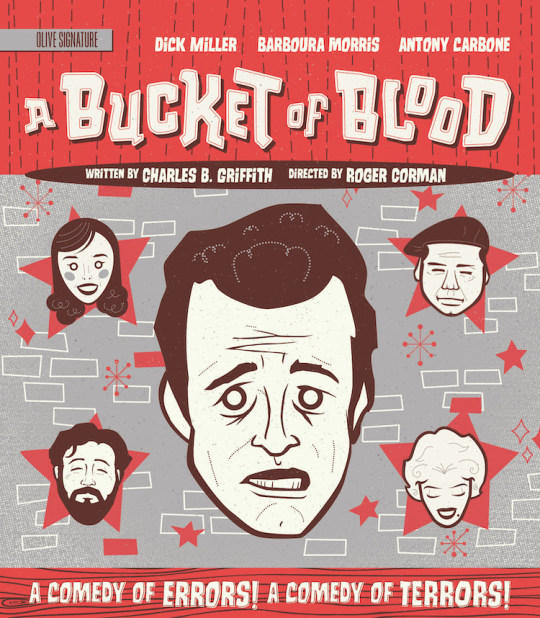
Dick Miller was such a constant presence in cinema that his death earlier this year was almost like losing an old friend. His familiar face would often only pop up for a scene or two, but he would almost always steal them. Thankfully, he had a long life and left behind plenty of movies through which he lives on. Over the course of his six-decade career, Miller amassed over 150 acting credits, including Gremlins, The Terminator, Twilight Zone: The Movie, The Dirty Dozen, The 'Burbs, 1941, and Tales from the Crypt: Demon Knight.
1959's A Bucket of Blood is significant for several reasons, perhaps the most notable one being that it's a rare leading role for the character actor. Miller stars as Walter Paisley, a name that would follow him throughout his career, as later filmmakers would adopt it for Miller’s cameo appearances. A Bucket of Blood is also one of Roger Corman's best directorial efforts. It may not have the cache of his Edgar Allan Poe adaptations with Vincent Price or the cult status of The Little Shop of Horrors, but it's one of his most entertaining works.
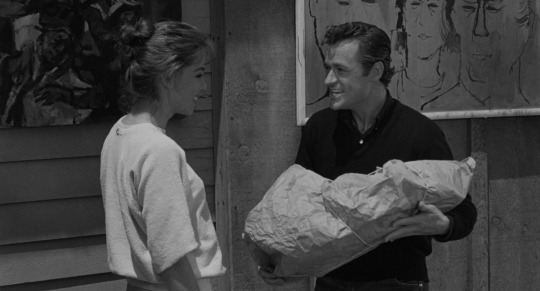
In typical Corman fashion, A Bucket of Blood was conceived as a way to repurpose leftover sets from 1959's Diary of a High School Bride. He hired writer Charles B. Griffith - their first of three horror-comedy collaborations, succeeded by The Little Shop of Horrors (which not only follows the same plot structure but also reused the sets) and Creature from the Haunted Sea - to pen the script in five days. Corman then shot the film in another five days on a budget of $50,000. Running an economical 66 minutes, it remarkably doesn't look nearly as cheap or as rushed as it undoubtedly was.
Miller's Walter Paisley is a cafe busboy who dotes on insufferably pretentious artists but has ambitions of being one himself. After accidentally killing a cat, inspiration strikes to cover it up as a grotesque yet dignified sculpture. When the local art critics and collectors respond positively to it, he's pressured to replicate the success. The taste of fame goes to his head, turning Walter into one of the obnoxious beatniks who once mocked him, amidst his inadvertent murder spree.
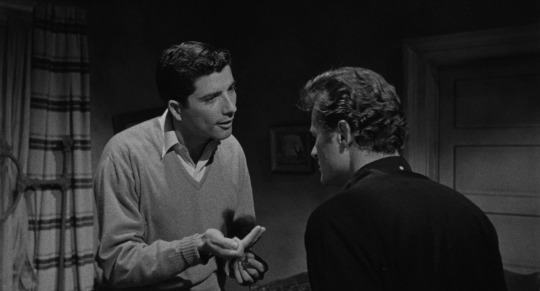
Miller cited A Bucket of Blood as his favorite role, and it is indeed a highlight of his storied career. Giving new meaning to the phrase "tortured artist," the pathos he brings to the character allows him to walk the line between protagonist and antagonist. Miller even subtly shifts his body language from a meek hunch to a poised swagger as his newfound notoriety boosts his confidence. Along with a bevy of Corman's B-movie regulars, the cast notably features Ed Nelson (Peyton Place) and future game show host Bert Convy (Win, Lose or Draw).
Corman’s filmmaking prowess lies not only in his penchant for pinching pennies, but also his talent for discovering and surrounding himself with talent. Despite the restricted time frame, director of photography Jacques R. Marquette (Burnt Offerings, Attack of the 50 Foot Woman) was able to deliver quality images. Shot in black and white, the use of shadows and lighting is inspired. Selections from the film's jazz score, composed by Fred Katz, were reused in The Little Shop of Horrors and Creature from the Haunted Sea.
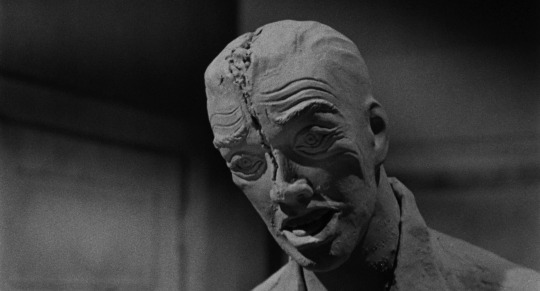
A Bucket of Blood has been released on Blu-ray as part of Olive Films' Olive Signature line. Limited to 3,500 units, this edition is housed in a slipcase along with a booklet featuring an essay on the film and its legacy by Caelum Vatnsdal, author of You Don’t Know Me, But You Love Me: The Lives of Dick Miller. The film itself has been mastered from a new 4K scan, looking as pristine as ever in honor of its 60th anniversary, and is accompanied by a variety of special features.
In an interview shot mere months before his passing, Miller is joined by his wife, Lainie Miller, for a 12-minute interview. His declining health is apparent, but he remains charming, particularly in his interactions with Lainie. Corman, as efficient and sharp as ever at the age of 93, tells the story of the making of the movie in under eight minutes. An archival audio interview finds Griffith briefly discusses each of his scripts over the course of 20 minutes. The 8mm "digest" version of the picture, which could be enjoyed at home before VHS was invented, is included; condensed to an 8-minute, silent montage of murders followed by the final chase.
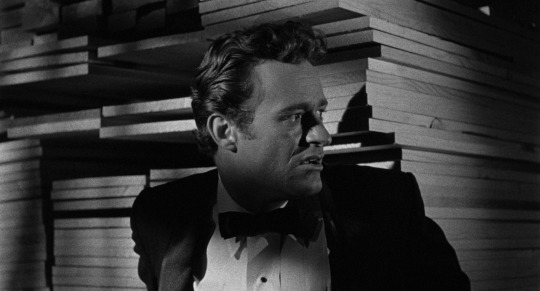
Elijah Drenner, director of the fantastic documentary That Guy Dick Miller, provides an audio commentary, which he begins by calling A Bucket of Blood "Corman's first great movie." It largely plays like a film historian track, detailing the production and its players, but his relationship with Miller makes it more engaging. Drenner also provides a brief visual essay comparing the original, 93-page script (titled The Yellow Door) to the final product, recreating unfilmed passages like an audio drama.
One of the most fascinating special features is the prologue from the film's German release, where - in a clever but misleading advertising strategy that would make Corman proud - it was marketed as a sequel to House of Wax. The 10 minutes of German footage purports that Walter Paisley is the last descendant of Vincent Price's character (portrayed by an unknown German actor under prosthetics). Extras are rounded out by a digital version of Vatnsdal's booklet essay, a gallery of recently discovered on-set photography, and the U.S. and German theatrical trailers.

Nary a dull moment among its lightning-fast pacing, A Bucket of Blood works remarkably well 60 years later. The concept remains timely, as both the social commentary and dark satirization of the counterculture art scene still play. It was already remade once as a TV movie starring Anthony Michael Hall in 1995, but you could swap out beatniks for today’s hipsters to make a contemporary, subversive slasher-comedy of errors in the vein of Tucker and Dale vs Evil.
A Bucket of Blood is available now on Blu-ray via Olive Films.
#a bucket of blood#roger corman#dick miller#charles b. griffith#bucket of blood#ed nelson#bert convy#olive films#dvd#gift#review#article#little shop of horrors#50s horror#1950s horror#b movie
12 notes
·
View notes
Photo
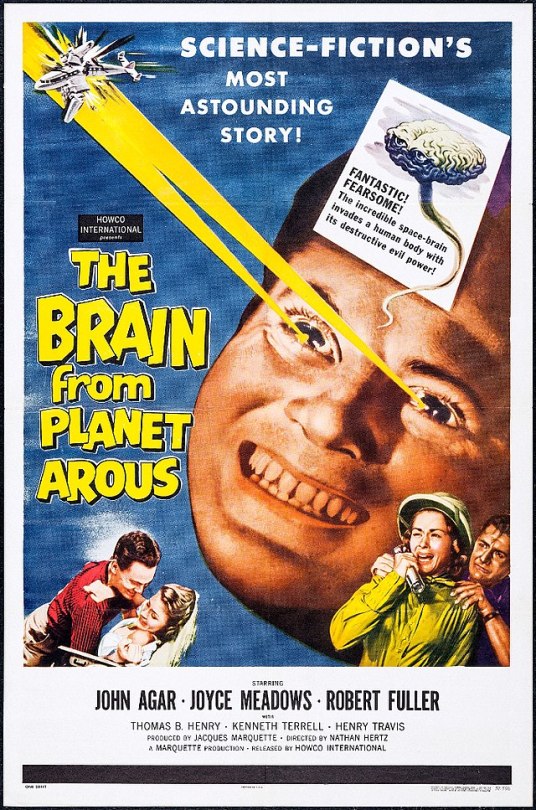
The Brain From Planet Arous (1957)
The Brain from Planet Arous is a 1957 independently made American black-and-white science fiction film, produced by Jacques R. Marquette, directed by Nathan H. Juran, that stars John Agar, Joyce Meadows, and Robert Fuller. Distributed briefly by Howco International in late 1957, the film appeared in 1958 on a double feature with Teenage Monster.
The storyline features themes of alien possession and world domination by an alien named Gor. Another alien, Vol, has been sent to Earth to capture the criminal Gor and return him to their home world.
1 note
·
View note
Text
10 Interesting Facts About The DuSable Bridge

One of the most important bridges in the history of the city of Chicago is located right in the heart of the Downtown area of the city. In this post, you can discover the ultimate list of interesting facts about the DuSable Bridge, an iconic bridge with a couple of fascinating stories to tell!
1. It carries an important road over the Chicago River
The DuSable Bridge is not just one of the most historically important bridges in Chicago, Illinois, mainly because of its location, but also carries one of the most famous roads in the city. It carries Michigan Avenue across the Chicago River in Downtown Chicago, one of the main boulevards featuring the most important commercial areas in the city, including the so-called "Magnificent Mile." It has a north-south orientation and the northern part of the bridge is home to some of the most iconic buildings in the city, including the Wrigley Building and the Tribune Tower. The scenic Chicago Riverwalk is located just to its east as well.
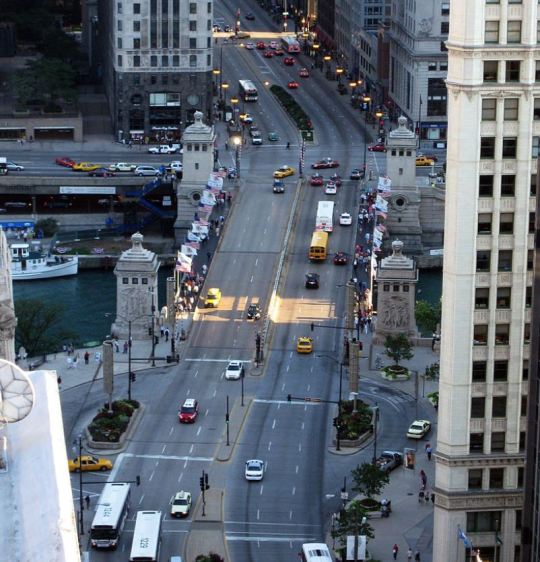
Aerial view of the bridge / David B. Gleason / https://creativecommons.org/licenses/by-sa/2.0
2. It was renamed in 2010 in honor of a particular Chicago resident
The original name of the bridge upon completion in the year 1920 was the "Michigan Avenue Bridge, a reference to the road it carries on its two decks. Because of its historically significant location, the bridge has been subject to being renamed all throughout its history. The first two official proposals were the "Marquette–Joliet Bridge," in honor of two explorers from the early days of the state of Michigan, and the "Fort Dearborn Bridge," a reference to a fort that was located here before. One of the most remarkable facts about the DuSable Bridge is that it was only renamed to its current name in the year 2010. This name is a reference to a man named Jean Baptiste Point du Sable (before 1750-1818), a trader of French-African descent who is considered to be the first non-indigenous resident of the city in 1780 and therefore the "Founder of Chicago."
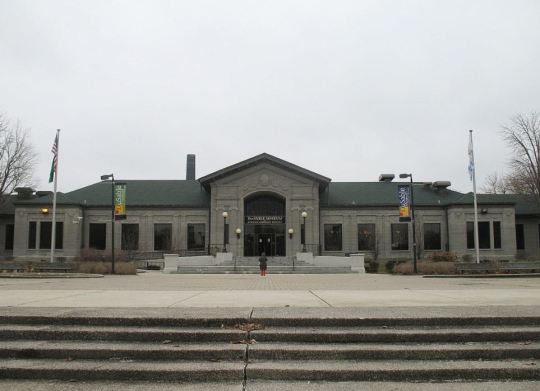
DuSable Museum of African American History / TonyTheTiger / https://creativecommons.org/licenses/by-sa/2.5/deed.en
3. The northern side of the bridge has unique historical value
The main reason that the bridge was named in honor of Jean Baptiste Point du Sable is that he built his house on the northern part of where the bridge is located today, near the mouth of the Chicago River, in the year 1780. The exact spot of his house is now an area referred to as "Pioneer Court," a plaza nestled in between the skyscrapers of Downtown Chicago, a sight that DuSable would watch in astonisment today, that's for sure! His house ended up being bought by a man named John Kinzie in 1800. He seriously expanded the structure and the house is therefore also sometimes referred to as the "Kinzie Mansion."

The house of DuSable / Laurent de Walick / Wiki Commons
4. The southern side was once the location of a United States fort
Just over 2 decades following the construction of the first non-indigenous house in Chicago, a fort was built on the southern part of where the bridge is located today. This fort was called "Fort Dearborn" and was completed in the year 1803. It was named in honor of Henry Dearborn (1751-1829), an American politician who served as the United States Secretary of War at the time. The original fort was completely destroyed during the War of 1812 in a battle now referred to as the "Battle of Fort Dearborn." It was rebuilt in 1816 but lost its purpose as a fortification in 1837. The fort eventually ended up being completely destroyed yet again in 1871 during the Great Fire of Chicago. Today, only a plaque can be found where the fort's southern perimeter wall once stood can be found.
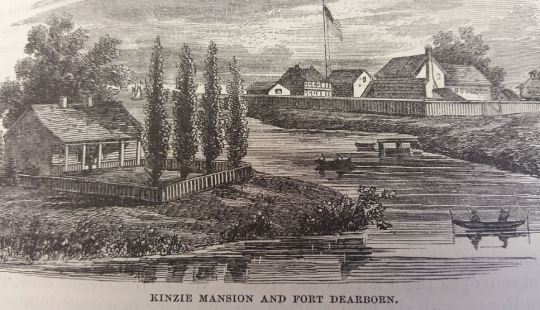
5. A bridge here was first proposed in the late 19th century
The first time that a bridge was proposed in this location was in the year 1891, followed by countless other proposals, ranging from a tunnel to a bascule bridge proposed by the Chicago Tribune in 1903. The first concrete idea came about in the year 1909 when the Burnham Plan of Chicago was created. This consisted of a wide boulevard and a bridge across the river at the location of the DuSable Bridge today. The first plan to be approved was that of a double-decked bridge in the year 1913, but subsequent legal battles delayed the start of the project until April 15, 1918, the day the construction started.

One of the proposed plans from 1909 / Wiki Commons
6. It almost looked like a famous bridge in Paris, France
The bridge was designed as a double-leaf, double-deck, fixed counterweight, trunnion bascule bridge, and the project was completed by the Bureau of Engineering of the Chicago Department of Public Works. Multiple designs were suggested, and perhaps the most notable was a suggestion to make the birdge look like the Pint Alexandre III in Paris, one of the most ornamented bridges in the city. Perhaps this design wouldn't have been that bad at all, especially with some of the most famous buildings in Chicago in the background, don't you think?
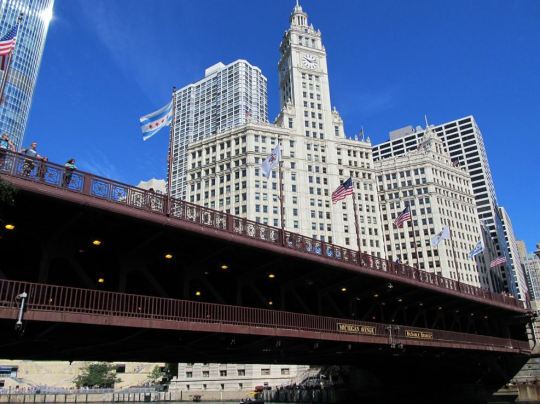
Detail of the bridge's design / Daryl Michell / https://creativecommons.org/licenses/by-sa/2.0/deed.en
7. The bridge held an amazing record upon completion
The architect of the project was the co-author of the 1909 Plan of Chicago, Edward H. Bennett (1874-1954). Apart from the Michigan Avenue Bridge, perhaps his most notable work was the Buckingham Fountain, the most prominent landmark in Grant Park. One of the most fascinating facts about the DuSable Bridge is that it's considered to be the first double-deck bridge in the world which featured roadways on both decks upon completion. Fast traffic was reserved for the upper deck, while the slower traffic, such as delivering trucks for the nearby docks, had to settle for the lower deck.
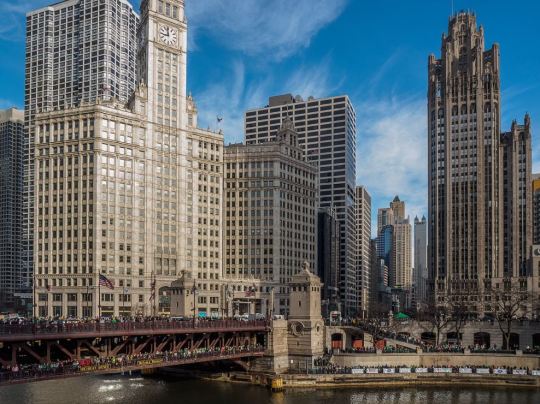
The iconic bridge / Atramos / https://creativecommons.org/licenses/by/2.0/deed.en
8. One of the piers was sunk to the bedrock below the river
The bridge has the capacity to open and close and counterweights are used for this mechanism. These weights drop into concrete pits of about 12 meters (40 feet) deep and lower about 10.5 meters (34.5 feet) below the surface of the water. These massive concrete pits on each side of the bridge are supported by 9 cylindrical concrete piers in order to provide stability. The 4 counterweights each weigh 1,447 tonnes (1,595 short tonnes). 17 of these piers are sunk at depths between 24 to 27 meters (80 to 90 feet), while one of them reaches the bedrock below to a depth of 33 meters (108 feet) below the river surface.

The bridge opened up / Stephen Hogan / https://creativecommons.org/licenses/by/2.0/
9. The bridgehouses are decorated with sculpted reliefs
Because the bridge has such historic importance in the city, 4 sculpted reliefs have been added in 1928 which depict scenes from the history of the city. These 4 reliefs are located on each of the 4 bridgehouses and depict: - The Discoverers - Depicts early explorers in the region, Louis Joliet, Jacques Marquette, René-Robert Cavelier, Sieur de La Salle, and Henri de Tonti. - The Pioneers - Depicts John Kinzie as he leads a group of people through the wilderness. - Defense - Depicts US Army Officer George Ronan during the 1812 Battle of Fort Dearborn. - Regeneration - Depicts workers rebuilding the city following the Great Chicago Fire of 1871. The first two reliefs are featured on the northern side of the bridge and were sculpted by James Earle Fraser (1876-1953) while the reliefs on the southern side were sculpted by Henry Hering (1874-1949).

Regeneration by Henry Hering / Jeremy Atherton / https://creativecommons.org/licenses/by-sa/3.0/deed.en
10. The southwestern bridgehouse became a museum in 2006
The southwest bridgehouse is referred to as the "McCormick Bridgehouse & Chicago River Museum" and can be accessed from the Chicago Riverwalk. Here you can learn everything about the history of both the Chicago River and the DuSable Bridge. The museum was named in honor of the former owner of the Chicago Tribune newspaper, Robert R. McCormick (1880-1955), as his foundation raised $950,000 to make the establishment of the museum possible.
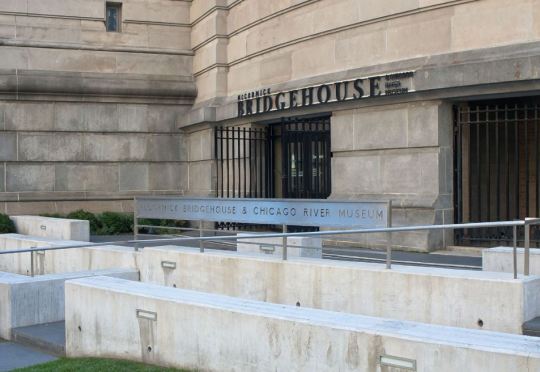
Entrance to the museum / Jeremy Atherton / https://creativecommons.org/licenses/by-sa/3.0/deed.en Read the full article
#Architecture#Bridges#Buildings#Chicago#DuSableBridge#DuSableBridgefacts#FamousBridges#FamousBuildings#LandmarksinChicago
0 notes
Text
Teenage Monster - USA, 1958 - reviews
Teenage Monster – USA, 1958 – reviews
‘Wild! Wanton! Weird!’
Teenage Monster is a 1958 American science-fiction horror feature film about a boy mutated by a meteorite who turns into a killer teenager.
Produced and directed by Jacques R. Marquette (Attack of the 50 Foot Woman; The Brain from Planet Arous) from a screenplay written by Ray Buffum (Island of Lost Women; The Brain from Planet Arous) in 1957 and released 8th January 1958.
View On WordPress
#1958#Anne Gwynne#Chuck Courtney#film#Gloria Castillo#horror#movie#review#reviews#Stuart Wade#Teenage Monster
0 notes
Photo

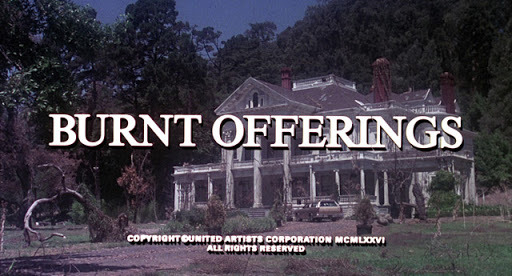
CALIFICACIÓN PERSONAL: 7 / 10
Título Original: Burnt Offerings
Año: 1976
Duración: 116 min
País: Estados Unidos
Director: Dan Curtis
Guion: William F. Nolan, Dan Curtis. Novela: Robert Marasco
Música: Bob Cobert
Fotografía: Jacques R. Marquette
Reparto: Karen Black, Oliver Reed, Bette Davis, Burgess Meredith, Eileen Heckart, Lee Montgomery, Dub Taylor
Productora: United Artists
Género: Horror, Thriller, Mistery
https://www.imdb.com/title/tt0074258/
TRAILER:
youtube
0 notes
Text
How French is “Des Moines”?
Q: I heard Pat say on Iowa Public Radio that the city of Des Moines got its name from a Native American word for a path. I always thought the French named it for the monks, or moines, in the area.
A: No, the monk story is a popular myth, or as historians call it, “a spurious etymology.” It’s true that moine means “monk” in French, but that wasn’t the source of the name.
The city was named for the Des Moines River, which was indeed named by French explorers. However, they got the name in the 1600s from a Native American term that sounded to them like “Moingona,” and which they eventually shortened to “Moin,” historians say.
In the indigenous Miami-Illinois language, moingona meant a road or a portage (a path for carrying a boat and supplies between waterways).
The word referred specifically to a path that a local tribe of the Illinois nation (also called the Moingona) used to circumvent rapids on the river near where it joins the Mississippi at the southeastern corner of Iowa.
As the city’s official website notes, opinions about the origin of the name have varied over the years.
But “the consensus seems to be that Des Moines is a variation of Moingona, Moingonan, Moingoun, Mohingona, or Moningounas, as shown on early maps.”
(We’ve also seen the spelling “Mou-in-gou-e-na,” apparently an attempt to reproduce the original native pronunciation.)
In the 1670s, two French explorers, Father Jacques Marquette and Louis Joliet, were the first Europeans to explore the Mississippi River Valley, and hence the first to set foot in what is now Iowa.
They encountered the Moingona people near a large tributary on the west bank of the Mississippi, and later French explorers adapted the name of the tribe, shortening it to Moin, and named the tributary des Moins (“of the Moins”), according to historical accounts.
A 1681 French map, based on the explorations of Marquette and Joliet, shows a Moingona village, marked as Moingwena, along a river that runs into the Mississippi. And later French maps and journals, from the early 1680s to the 1780s, refer to this tributary as Rivière Des Moingona, le Moingona R, r des Moingona, Moin, and River des Moins.
English speakers used the name as well. In the journals of the Lewis and Clark expedition, the name is recorded as “the river Demoin” (1804), and in the journals of the English explorer Thomas Nuttall it’s “the river des Moins, or Moingona” (1819).
An article entitled “The French Impress on Place Names in the Mississippi Valley,” by John Francis McDermott, published in August 1979 in the Journal of the Illinois State Historical Society, remarks on the ”constant habit of abbreviation” by the French.
“No monks ever had anything to do with the Des Moines River in the present state of Iowa,” McDermott writes. “The Moingona tribe of Indians lived there and the French merely cut their name down to Moin; traders went to le pays des Moins.” (That is, “the land of the Moins.”)
The historian Virgil J. Vogel has much the same explanation in his book Iowa Place Names of Indian Origin (1983). He quotes from an early 19th-century account of the meeting of Marquette, Joliet, and the Moingona people:
“The travellers, having halted within hailing distance, were met by the Indians, who offered them their hospitalities, and represented themselves as belonging to the Illinois nation. The name which they gave to their settlement was Mouin-gouinas (or Moingona, as laid down in the ancient maps of the country), and is a corruption of the Algonkin word Mikonang, signifying at the road; the Indians, by their customary elliptical manner of designating localities, alluding, in this instance, to the well-known road in this section of country, which they used to follow as a communication between the head of the lower rapids and their settlement on the river that empties itself into the Mississippi, so as to avoid the rapids.”
Later on, the account continues, the French “adopted this name; but with their custom (to this day, that of the Creoles) of only pronouncing the first syllable, and applying it to the river, as well as to the Indians who dwelt upon it; so that they would say ‘la rivière des Moins’—‘the river of the Moins’; ‘aller chez les Moins’—to go to the Moins (people).”
So how did “Moines” get its “e”? The account explains that later inhabitants came to believe that the word was derived from the French term for “monks” (moines), assuming incorrectly that monks must have lived in the area.
All this preceded the existence of the city, of course. In 1843, a military post was established in central Iowa where the Des Moines and Raccoon Rivers intersect. The post was named Fort Des Moines. The city that grew up on the site was named “Fort Des Moines” when incorporated in 1851, and shortened to “Des Moines” six years later.
Not long after, an unincorporated town about 40 miles upstream on the Des Moines River was named Moingona, and to this day it bears the original Indian name.
Here’s another interesting aside. The original proposal was to name the military post “Fort Raccoon,” a choice that was rejected by higher-ups in the army.
The War Department, in the person of Gen. Winfield Scott, declared that “Fort Raccoon” was not a dignified name for a fort. Instead, it was named “Fort Des Moines.”
So if it hadn’t been for General Scott, the state capital would probably be known as “Raccoon.”
Help support the Grammarphobia Blog with your donation. And check out our books about the English language.
from Blog – Grammarphobia http://www.grammarphobia.com/blog/2017/01/des-moines.html
0 notes
Photo










Attack of the 50 Foot Woman
・ ・ ・
Director: Nathan Hertz
Director of Photography: Jacques R. Marquette
#Attack of the 50 Foot Woman#Nathan Juran#Jacques R. Marquette#Allison Hayes#Yvette Vickers#William Hudson
52 notes
·
View notes